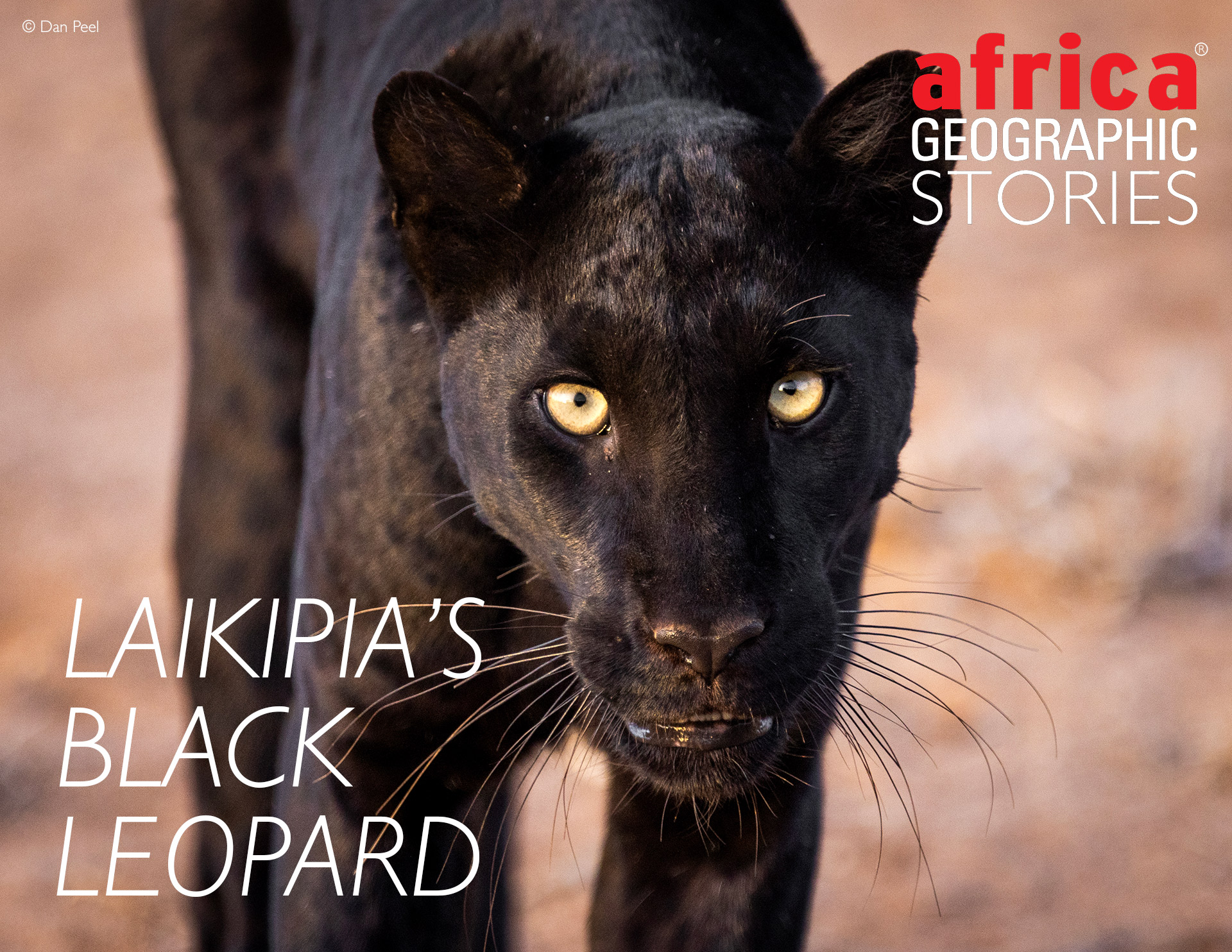
The incredible black panther of Laikipia


Seeing a black leopard in the wild is an extraordinary feat. A wild encounter that dreams are made of. But tales of this magnificent creature reverberate from a small, wild county in Kenya. Dan Peel has spent hours with this rare black panther in Laikipia. He shares his story – and incredible photos – of this famous leopard.
Gazing out over the expansive vistas of Laikipia, a profound sense of tranquillity washes over me. A sudden chill in the air brushes against my face, descending from the snow-capped peaks of Mount Kenya in the distance. The sun falls rapidly towards the horizon in this part of the world; the rocky ridge I am sitting on in Laikipia Conservancy, Kenya, is just under 100km north of the equator. It’s the onset of the golden hour, my favourite time of day. Not only because the light throws a beautiful golden hue over everything it touches, but in this specific region, it signifies the leopard hour.
I watch the colossal storm clouds gather over the western horizon, above the scar traversing Africa – the Great Rift Valley. Emerging from the river below, a herd of elephants don their “black socks”, showing me they have been wading through the chilly, brown waters of the Ewaso Narok River. The scene exudes quintessential African charm; my thoughts wander, and I am in my happy place.
Suddenly, a single nasal whistle pierces the stillness, jolting me back to full alertness. Peering down the valley beneath, I hear another whistle, the distinctive alarm call of the dik-dik, a small knee-high antelope that thrives in this region.
This is precisely what I’ve been waiting for – an alarm call, the most dependable way to locate leopards in Laikipia. Scanning the valley below, the river, the luggas (Swahili for gullies), and the dark rocky outcrops. Inspecting every bush meticulously, I strain my eyes until they water, momentarily lowering my binoculars before resuming my search. I’m determined to pinpoint the dik-diks responsible for the call and, hopefully, the reason for their distress. A quick movement catches my eye, a mysterious shift in the scenery I can’t see. My entire focus narrows onto the specific bush that drew my attention. I hold my gaze there, unable to identify anything unusual. But still, I wait; I have been sitting on this ridge all afternoon waiting for this exact moment. In an instant, the dik-dik alarms intensify. In this area, I know what that means. There is a leopard on the move. Now to find it.
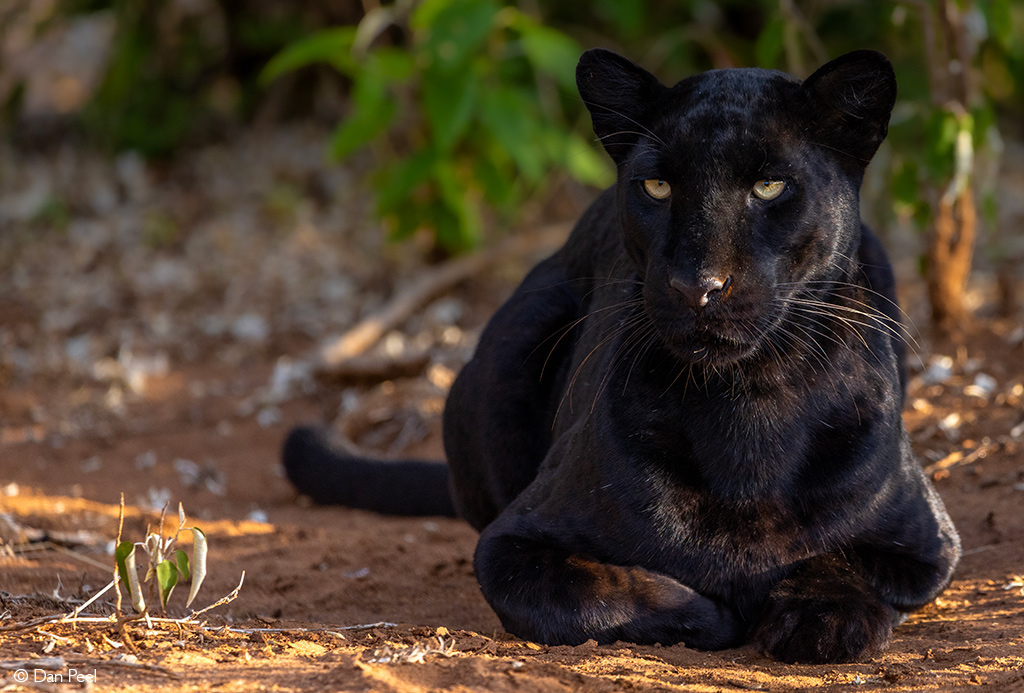
The dark basalt rocks beneath the bush begin to move – a moving shadow. Immediately, the shape takes form. And there she is, as if she was never in hiding, strolling out of the trees into the open. The dik-diks redouble their efforts to let the world know there is danger lurking. But they are not even given a momentary glance.
Holding her tail high in the classic arch of a leopard at ease, she glides across the open ground down towards the river – pure grace and beauty held like a coiled spring of unfathomable power. There is no animal, in my opinion, that commands as much respect.
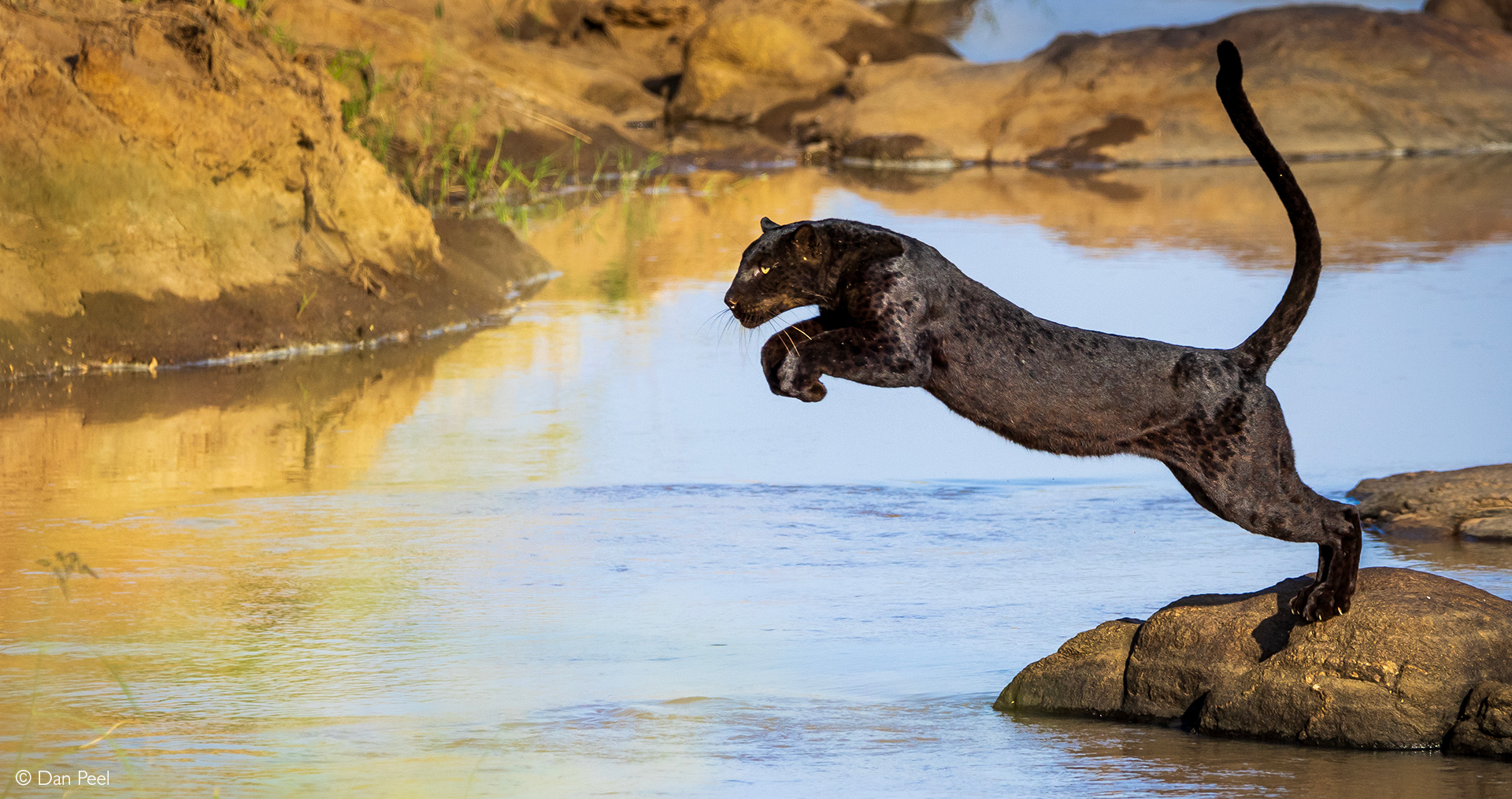

But this is no ordinary leopard; this is a black leopard. A rare genetic variety, this black leopard calls Laikipia home. In fact, Laikipia is home to the largest known population of black leopards. This is an animal that I had previously only ever dreamt about, a mythical creature that was beyond any chance of sighting.
This individual, I know well. This is Giza, the black leopard of Laikipia. I have been privileged enough to spend the last two years of my life following her, photographing her, watching and learning from her incredible journey from a playful cub into a lethal huntress.
My experience in the African bush started as a young boy growing up on a wildlife farm in Zimbabwe. I had always been fascinated by everything natural. But above all, leopards held my interest. Something about their enigmatic presence, piercing eyes, and ability to unleash unbelievable power or just as quickly slink into the bush without a trace.
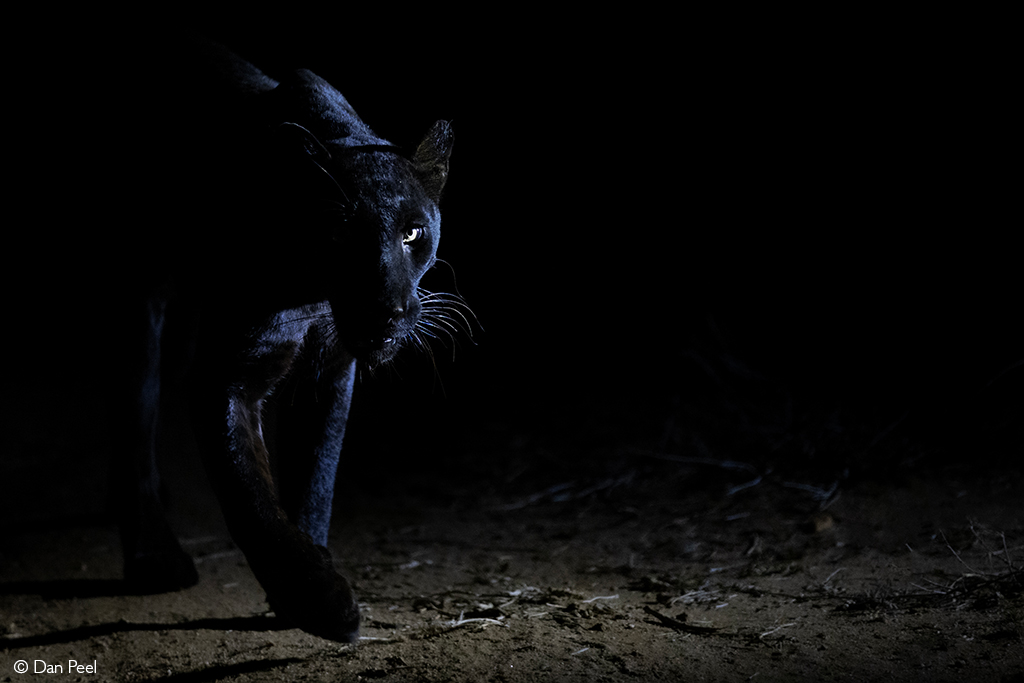
Throughout my decade and a half of guiding, I had heard whispers of the existence of black leopards in Africa. Still, there was never enough to hold faith in – rumours of a fleeting glimpse or an unidentifiable blurry camera-trap photo. It was not until my career took me to Laikipia that these rumours became more credible. More than a myth, these were real animals, rare and elusive, but real.
A culmination of incredibly fortunate events led us to become acquainted with Giza Mrembo – which is the full name we at Laikipia Wilderness Camp gave her. Meaning ‘the beautiful darkness’ in Swahili, it is a name that she lived up to in the next two years we got to know her.
In early 2022, the drought had ravished this part of Kenya. Many plains game species moved large distances in search of even the smallest patch of grazing, or perished in their efforts. This mass devastation was hard to watch, but it did bring about a unique situation. In times like this, predators thrive – on a seemingly unlimited supply of meat – and their numbers grow. Amid this chaos, Giza’s mother, a regular golden spotty leopard, introduced us to her one-year-old cub, Giza. And so this incredible journey began.


When we first crossed paths with Giza, she was a young leopard, still heavily reliant on her mother. She and her mother had been feasting on one of the unfortunate casualties of the drought. My initial encounter with her was a mix of excitement and deep emotion, a feeling impossible to put into words adequately. I had dreamt of encountering such an animal since I was a young boy.
Initially, she allowed only a brief glimpse, but over time, she grew bolder. Taking cues from her mother, she appeared at ease in our presence.
Giza’s life has been difficult, marked by close bonds and formidable challenges. Following in her mother’s footsteps, she has evolved into a skilled huntress, albeit with a unique technique. Her jet-black coat, advantageous in dense forests, or under thick undergrowth or moonless nights, offers little camouflage in the rugged acacia shrubland of this African region.
Leopards are renowned masters of camouflage, but Giza has never been one to blend in; she seems to have never grasped the concept. Her hunting strategy revolves around covering as much ground as possible, relying on surprise rather than stealth. She moves swiftly from one bush to another, hoping to catch a dik-dik off guard and pounce before it can successfully escape. She has skillfully harnessed the dense population of dik-diks to her advantage.
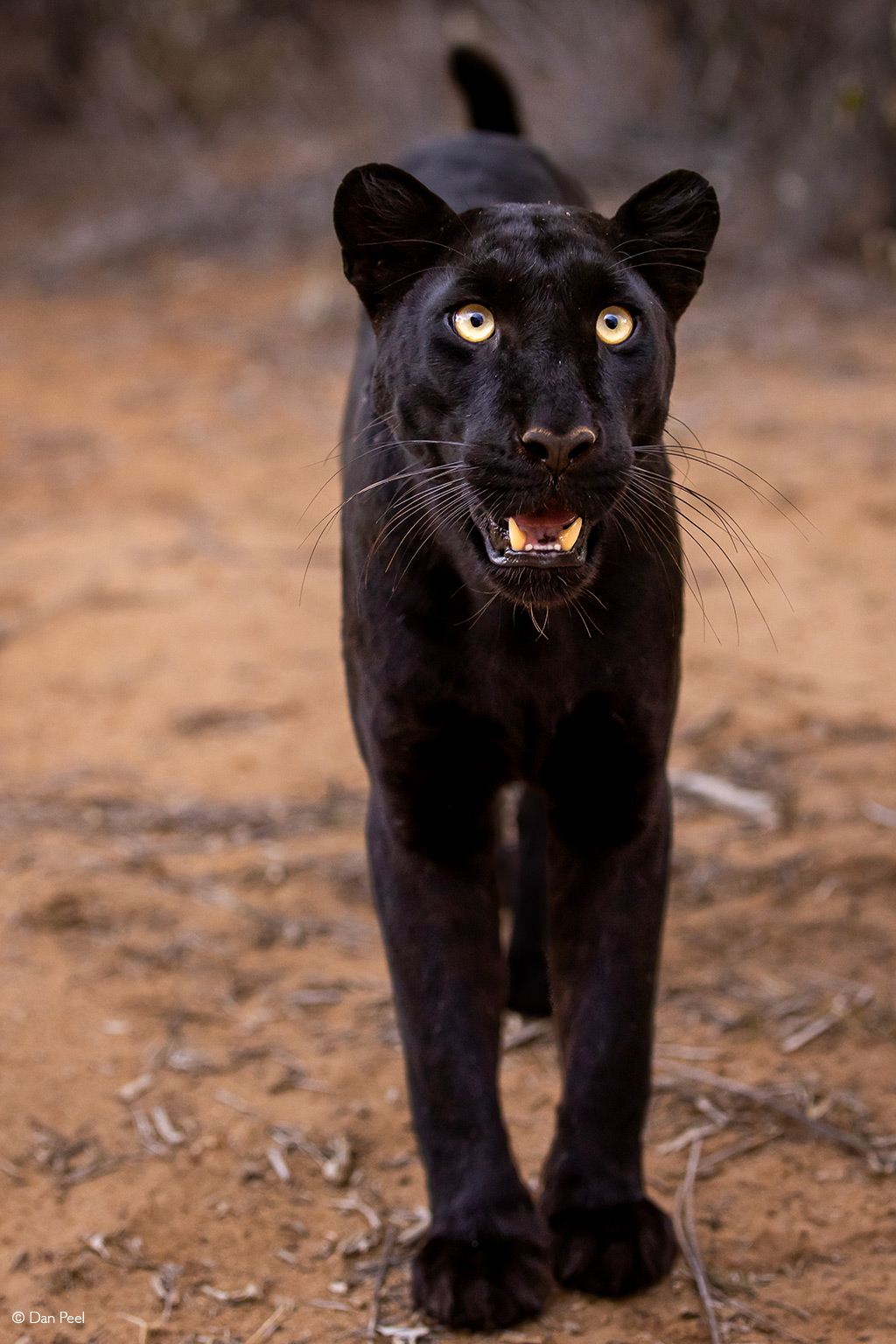
With such an efficient hunting technique, her prowess did not go unnoticed. After numerous nights of observing this, the resident male leopard in the area figured out that he could secure a free meal nearly every night by following Giza. His size and strength left poor Giza no chance, and the persistent male became an increasing problem for her. Losing almost every kill she made dealt a devastating blow, causing her condition to deteriorate. As challenging as it was to witness, it was nature’s way, and I had to let it unfold.
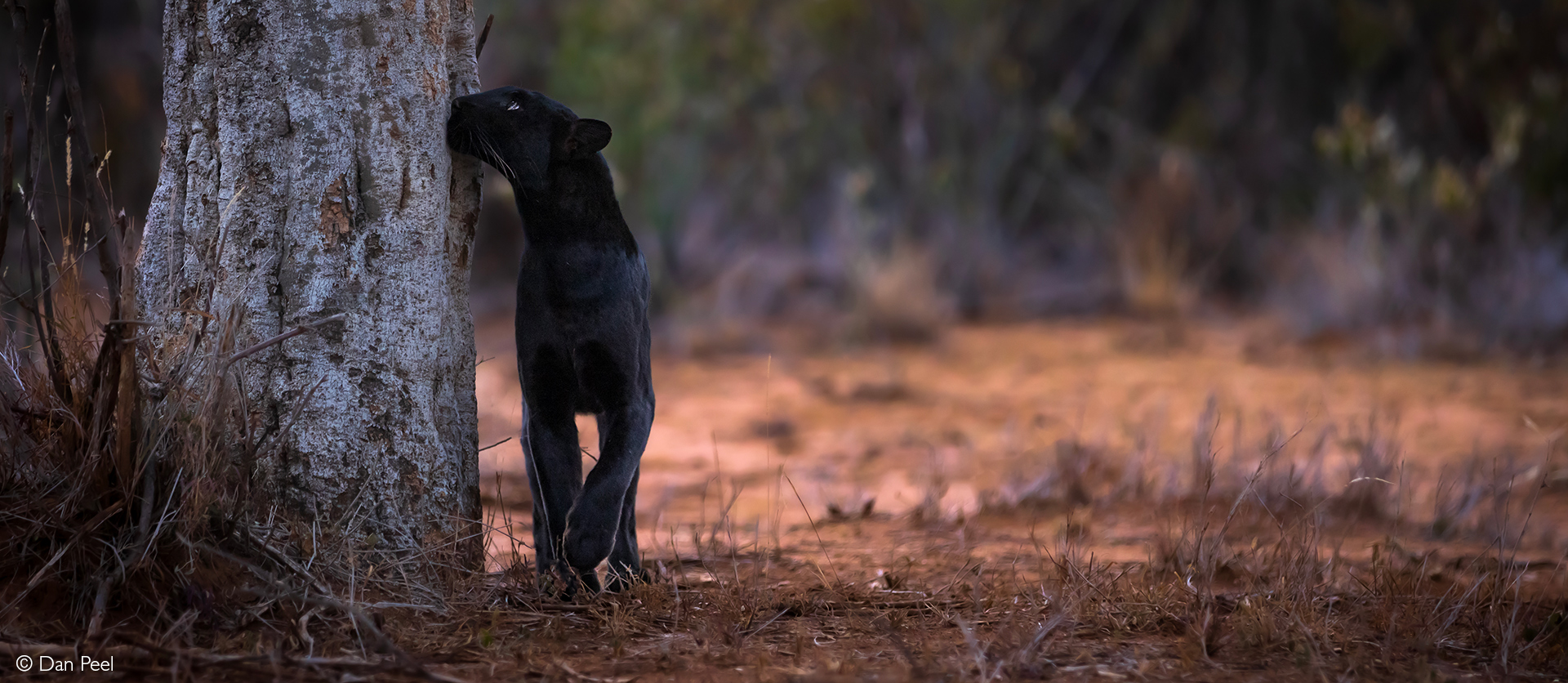

After a few months of this struggle, Giza was visibly ailing. Her ribs and spine were showing. She devised a solution to her predicament as a tribute to her undeniable tenacity. She didn’t choose to challenge her male competitor because she couldn’t, or to abandon her territory in an area already teeming with leopards. Instead, her answer was to become an even more proficient hunter, and so she did. Almost overnight, she began killing two dik-diks each night, the first presented reluctantly as a peace offering to appease the male and the second to sustain herself.
The undeniable adaptability and resilience of Giza, the black leopard, is awe-inspiring. Beyond her breathtaking beauty, her presence and energy set her apart from any other leopard I have had the privilege of encountering.
 Find out about Kenya for your next African safari. We have ready-made safaris to choose from, or ask us to build one just for you. Or start planning your safari to Laikipia with the help of our safari experts now.
Find out about Kenya for your next African safari. We have ready-made safaris to choose from, or ask us to build one just for you. Or start planning your safari to Laikipia with the help of our safari experts now.
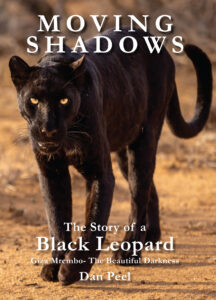 Dan Peel is a professional safari guide. His book, Moving Shadows, offers a captivating collection of photographs capturing the story of ‘Giza Mrembo’, a black leopard of Laikipia.
Dan Peel is a professional safari guide. His book, Moving Shadows, offers a captivating collection of photographs capturing the story of ‘Giza Mrembo’, a black leopard of Laikipia.
Through a blend of vivid photographs and compelling narratives, the book follows Giza’s extraordinary evolution from a curious cub to a powerful huntress.
Amidst the harsh realities of the African wilderness, Giza learns to navigate her environment with skill and finesse, utilising the cover of darkness and moonless nights to her advantage.
You can follow Dan on Instagram here. Or, to purchase a copy of Moving Shadows, click here.
To comment on this story: Login (or sign up) to our app here - it's a troll-free safe place 🙂.![]()






